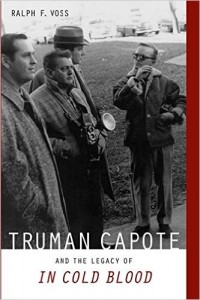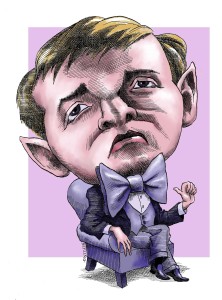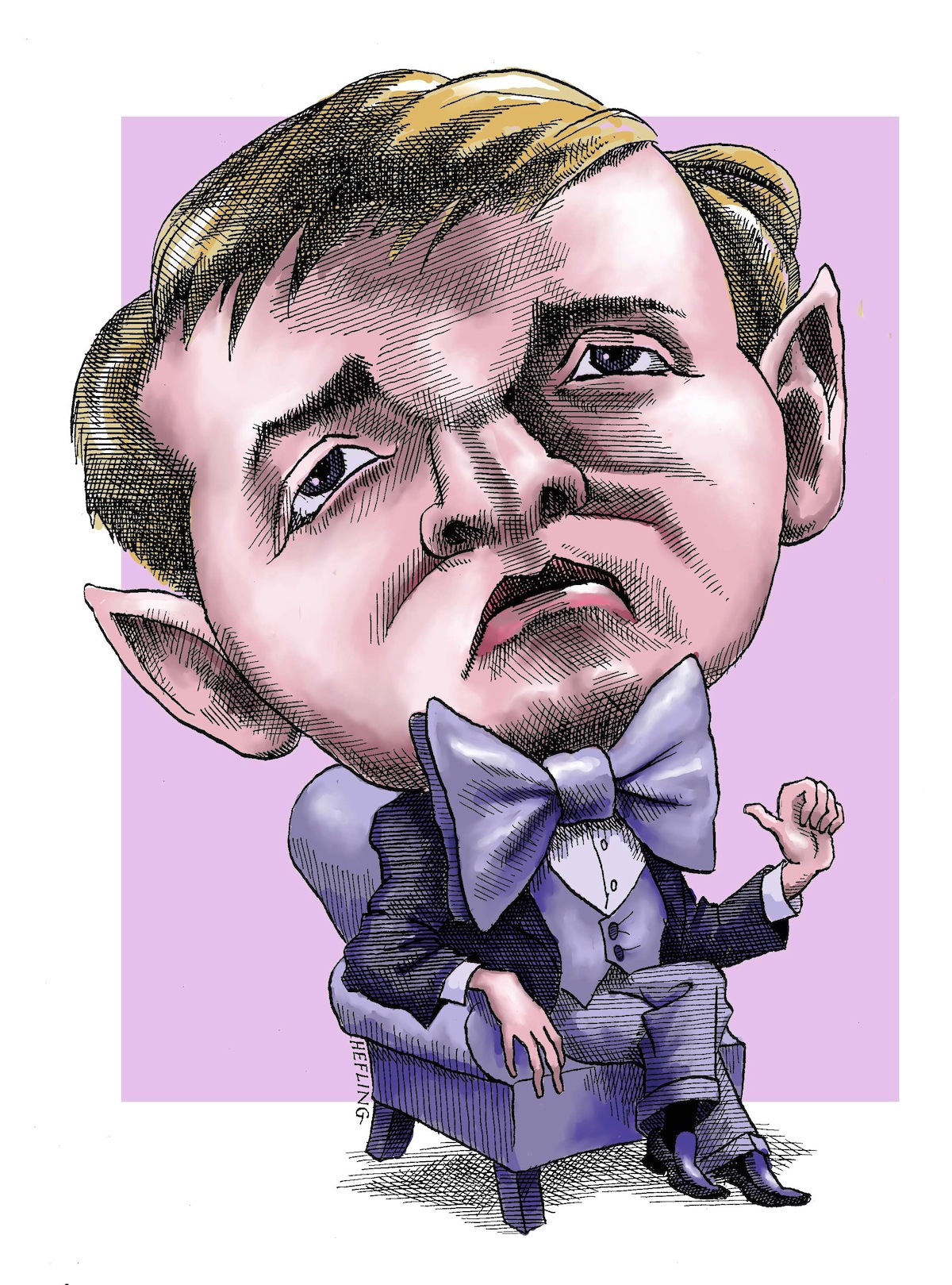 Truman Capote And the Legacy of In Cold Blood
Truman Capote And the Legacy of In Cold Blood
by Ralph F. Voss
University of Alabama Press
246 pages, $34.95
IT HAS BEEN nearly fifty years since the publication of Truman Capote’s In Cold Blood: A True Account of a Multiple Murder and its Consequences, but interest in both the book and in the way he wrote it remains so high that a few years ago not one but two movies opened back to back (Infamous and Capote) about his stay in Kansas, a story now as famous as the book itself.
Capote, who had recently published Breakfast at Tiffany’s, wanted his next book to be nonfiction. Years before, he’d produced The Muses Are Heard about a theatre group touring the Soviet Union with Porgy and Bess and The Duke in His Domain, a famously devastating New Yorker profile of Marlon Brando. But now he wanted something with “scope,” so when his editor at The New Yorker, William Shawn, gave him a choice between following a cleaning woman around Manhattan to see what she learned about her clients from their apartments and going out to Kansas to investigate the recent murder of a farmer and his family (an item he had come upon in The New York Times), Capote chose the latter.
The article Capote and Shawn had in mind was to be about the effects of murder on the people in a small town. Capote had always been a writer with his feet in two worlds—the small community in Alabama where his mother left him with relatives while she pursued a second husband up north, and New York City, where the adult Capote was so adept a social climber that he became the confidant of society figures like Babe Paley and Gloria Guinness, women he called his “swans.” The small town in Alabama gave him his friendship with Harper Lee, who went to Kansas with Capote, as well as fiction like The Grass Harp and the story “Children on Their Birthdays.” His  life in Manhattan gave him the novella Breakfast at Tiffany’s and the sections of Answered Prayers that, later, by betraying the swans’ secrets, caused his social downfall. But as Ralph Voss shows in his new book, Truman Capote and the Legacy of In Cold Blood, there is a continuum between the Capote who wrote gothic stories set in the South and the man who wrote about murder in Holcomb, Kansas. His subject had often been small-town life. What he didn’t know when he went out to Holcomb was that the article he and Shawn envisioned would turn into a book, one that Capote began writing when he was 35 but could not publish till he was 41.
life in Manhattan gave him the novella Breakfast at Tiffany’s and the sections of Answered Prayers that, later, by betraying the swans’ secrets, caused his social downfall. But as Ralph Voss shows in his new book, Truman Capote and the Legacy of In Cold Blood, there is a continuum between the Capote who wrote gothic stories set in the South and the man who wrote about murder in Holcomb, Kansas. His subject had often been small-town life. What he didn’t know when he went out to Holcomb was that the article he and Shawn envisioned would turn into a book, one that Capote began writing when he was 35 but could not publish till he was 41.
Voss, a retired professor of English at the University of Alabama, was attending high school 200 miles from Holcomb when the Clutters were murdered. His book examines multiple facets of In Cold Blood: Capote’s literary style, his claim that he’d invented the nonfiction novel, his gothic muse, his opposition to capital punishment, his career as a celebrity; plus the plays, books, and films that In Cold Blood inspired, what Kansans think of it and him, and finally what Voss calls the book’s “gay subtext.”
That there is a gay subtext to In Cold Blood is apparent to anyone who reads the book; throughout the grisly story, not only does Dick Hickock call Perry Smith “honey” but they sound just like a married couple in which Hickock is the husband and Smith the wife. There are many passages like the following description of the way Perry Smith regarded Hickock: “Dick was very literal-minded, very—he had no understanding of music, poetry—and yet when you got right down to it, Dick’s literalness, his pragmatic approach to every subject, was the primary reason Perry had been attracted to him, for it made Dick seem, compared to himself, so authentically tough, invulnerable, ‘totally masculine.’” Perry, on the other hand, was the dreamy, wannabe artist whose background had many elements in common with Capote’s, from short stature to a father who abandoned them—though Smith was the one who actually killed the Clutters: something not even Hickock could bring himself to do, losing at the last minute the masculine role.
Voss cites a former inmate’s claim that Smith, who shared a cell with Hickock (both were in prison for petty crimes), was Hickock’s “punk”—his sexual bottom—and that Smith went along with the whole escapade because it was a way to remain with Hickock. What Hickock was feeling when he called Smith “honey” we may never know, but it sure fits in with Leslie Fiedler’s famous essay about the homoerotic strain in American fiction, “Come Back to the Raft Ag’in, Huck Honey!” The conflation of sex and violence is everywhere in In Cold Blood, even in the way Hickock says, on their way to the farmhouse in anticipation of the shotgun blasts: “Ain’t that what I promised you, honey—plenty of hair on them-those walls?”
In the field notes Capote made for In Cold Blood (now in the New York Public Library), Voss found a reflection that Smith and Hickock were “all for killing the Clutters like a long fuck”—and when you read In Cold Blood, it’s clear, incredible as it may seem, that when the crucial moment comes in the Clutter household, the decision to murder the family seems to have less to do with the Clutters than with the relationship between the two killers. Nevertheless, Voss begins his chapter on the gay subtext of the book with a quote from an interview in which George Plimpton asked Capote if there was any homosexual relationship between the two men. “No,” he replied. “None at all.”
Why? “I think it’s doubtful,” writes Voss, “that either Capote or Plimpton believed that denial; but mid-1960’s public attitudes about homosexuality more or less mandated Capote’s reply. Indeed, if social progress could be discerned in Plimpton’s question, it would be that the question was asked in print at all.” This was why, presumably, certain things were left out of In Cold Blood. In his field notes, for instance, Capote wrote of Perry Smith: “In profile, he resembles a plump, rather unpleasant, and exceedingly tough lesbian.” “This description survived into his original first draft of the book,” Voss tell us, “but did not make it into the book itself.” Even more interesting is the big dick Smith noticed on the tenant of a boarding house in Las Vegas, where the two killers were caught. In Capote’s original first draft, Voss notes:
Perry tells Dick that the black man “never shut his door. Every time I passed by, he was always lying there in bed buck naked; he had the biggest dick you ever saw.” In the other version Perry says, “He had the biggest dick you ever saw. You couldn’t help staring at it—you didn’t have to be queer or nothing—it was just the biggest dick you ever saw.” In the published version in the book, Perry simply says of the black man, “He never shut his door. Every time I passed by, he was always lying there buck-naked.”
Small variations, but oh so telling, and partly due, Voss argues, to the context of the times, when Kerouac blurred the homoerotic bond between two of his lead characters in On the Road for the same reason: homosexuality was taboo. Diana Trilling had already taken Capote to task for squandering his talent on a homosexual theme in his first novel, Other Voices, Other Rooms. In other words, In Cold Blood emerged in the openly homophobic climate that Christopher Bram has described recently in Eminent Outlaws. That was why, a scholar suggests, Capote made so much of his claim that he had invented a new form: the nonfiction novel. Voss endorses a point made by Peter G. Christensen in his essay “Capote as Gay American Author”: “If In Cold Blood continues to be studied in terms of the nonfiction novel rather than through a gay-studies approach, we must remember that Capote himself attempted to set criticism along these lines.”
When Voss was growing up, he says, the only “queer” that Kansans knew about was Liberace, and maybe Tennessee Williams (but not their own native son, the deeply closeted playwright William Inge, whose biography Voss has also written). Capote himself was so unmistakable that it took the down-to-earth Harper Lee to overcome the effect the Tiny Terror had on the streets of Holcomb. (“Imagine what a Brussels sprout would sound like,” Gore Vidal replied when asked about Capote’s voice, “if a Brussels sprout could talk.”) But if Capote refused to modulate himself, his book was apparently another matter. “The more critics played volleyball with the nonfiction novel question,” Voss claims, ”the less likely they would venture into the trickier game of the gay subtext, and Capote surely knew that.”
It’s easy to forget that In Cold Blood was part of those times that were a-changin’—the 50’s becoming the 60’s. But the murders were committed in 1959, and Capote’s book came out in 1966—after the killers had sat on Death Row for five years while lawsuits attempting to stay their execution were exhausted (a period that gave Capote, who visited the two men in prison, some of the best scenes in the book). Nevertheless, it’s jarring to read that Peter Christensen thinks this book could be part of gay studies. On the face of it, this seems absurd—though the gay subtext between Smith and Hickock is not the only reason to grant him his point. Capote had said that he saw the killing of the Clutters as a collision of two Americas: the decent Midwestern nuclear family and the outcasts roaming the American darkness. Among the outcasts at this time one would have had to include homosexuals—which is presumably why Capote lied to Plimpton. But Capote the publicist (“A boy has to hustle his book”) was betrayed by Capote the artist—and by Capote the gay man.
Harper Lee claimed that Capote fell in love with Perry Smith when he first saw Perry seated at his arraignment before the judge in Garden City. Lee, Voss writes, said that Capote nudged her and said, “Look, his feet don’t touch the floor!” Lee’s thought was, “Oh, oh! This is the beginning of a great love affair.” She was right. Gerald Clarke, Capote’s best biographer, adds: “In fact, their relationship was more complicated than a love affair: each looked at the other and saw, or thought he saw, the man he might have been.”
Voss quotes a line from a letter that Capote wrote to Smith as evidence that Smith had at some point asked the writer if he was gay: “I answered truthfully (not that the answer isn’t obvious)!” Whether they ever had sex—a claim a detective who hated Capote made—is a question even Voss cannot answer, though it seems unlikely (despite the big kiss Daniel Craig plants on Toby Jones in Infamous). Still, Voss makes a convincing argument that In Cold Blood is an attempt to engage our sympathies for a killer with whom the writer felt a profound bond.
Even the poem by François Villon that Capote uses as an epigraph combines his instinct for chic (a poem in medieval French) with a plea for sympathy for the condemned. Capote, Voss points out, attributed Smith’s murdering the Clutters to a momentary “brain explosion”—a sort of out-of-body experience in which he saw himself doing something he wasn’t really responsible for; a dissociative moment that, according to a psychiatrist who did not testify at the trial, is common to killers. But Voss argues that Capote wants it both ways. He tries to extract some sort of forgiveness by spending a good deal of the book describing the miserable lot in life Smith had growing up, and then claims that when Smith killed the Clutters it was merely something analogous to an epileptic fit.
Whatever one concludes about the reason Smith did what he did—and that is the great mystery of the book—Voss mocks the idea that we should sympathize with Perry Smith because he was, like Capote himself, an artist (“Charles Manson was a pretty good musician too”). In Cold Blood, however, seems to have been part of its time in this way too: the assassinations of the Kennedy brothers, Lee Harvey Oswald, Martin Luther King, Jr., the Manson murders, Altamont, Bonnie and Clyde, the way the 60’s came apart in craziness and violence. Capote, Voss reminds us, wasn’t the only one to find a frustrated artist inside a killer. When Norman Mailer wrote The Executioner’s Song (1979), Capote charged that he was merely copying In Cold Blood, but Mailer went further in real life when he helped get a convict named Jack Henry Abbott, whose writing he admired (and helped get published), released on parole. A month later, Abbott stabbed to death an actor waiting tables in an East Village restaurant.
The curious thing is that even after reading Capote’s enormous effort at humanizing Perry Smith (not Hickock, a mean nut-job for whom he felt nothing), all it takes is one glance at the photographs in Voss’s book to wipe out the complexity of the narrative. Reading In Cold Blood, one is floored by the number of coincidences and small accidents that were necessary for the collision of these two small-time crooks and the Clutters to occur: the long history that lay behind that moment. But despite Capote’s marvelous eye for detail and compassion for Smith, one still thinks, examining the faces, that one is looking at good and evil. As Voss points out, the travails that Perry Smith suffered growing up—he had a rotten childhood—were the same ones his siblings endured, but they killed no one. Hickock did not even have the “excuse” of bad parents.
Neither man, at the end, felt remorse. Nobody, Voss writes, heard the apology that Capote has Smith enunciate just before his hanging. What is on record is what Smith said of Mr. Clutter: that he was “a very nice gentleman. … I thought so right up to the moment I cut his throat.” In the end, In Cold Blood reminds one most of Flannery O’Connor’s story A Good Man is Hard to Find, in which the Misfit shoots a family like the Clutters and mutters after each shot, “No pleasure but meanness.” Even if the Clutter killings were part of some desire on Smith’s part for a male companion, when you look at the photographs of Herb, Bonnie, Nancy, and Kenyon, one feels a rush of anger—that two punks killed four good people, two on the threshold of life, for forty dollars and a plastic radio—a disgust so intense that it is a tribute to Capote’s tremendous skill that the execution seen in the book is invested with so much pathos.
That hanging did not, however, end our fascination with this case, and Capote’s role in it. What Voss’s book has going for it is that it surveys what’s gone before: Gerald Clarke’s biography, George Plimpton’s oral history, Capote’s letters (Too Brief a Treat), numerous articles by critics, journalists, professors, even an ex-con whose piece appeared in Crime Magazine. That the gay subtext is there is clear without Voss. What Voss does is to look at the notes and rough drafts to show us what the author of In Cold Blood chose to put in and leave out. All he’s saying is: “Like his sometime friend Tennessee Williams, Capote took no particular pains to conceal his own homosexuality, but, also like Williams and several other gay writers of the time, he did take pains to conceal, or leave somewhat ambiguous, homosexuality in his writing that appeared in the 1950’s and 1960’s.”
Norman Mailer said Capote wrote the best sentences of any writer of his generation, so I suppose we can assume that Capote put in exactly as much gay text, and subtext, as he wanted to. Certainly no book is more carefully constructed and choreographed than this one, down to my favorite moment in the book, when cats are licking the remains of dead birds off the grilles of the cars parked outside the courthouse the day the killers are brought back. Whether In Cold Blood belongs to gay studies or true crime, it transcends these issues. Whether it is a gay book in the closet does not touch its power. Capote’s major work is a book in which a “second-tier” writer of Southern gothic (Voss’s estimation) not only found the scope he had been looking for, but was able to bring to bear all his talents in a way that he never was again—that extraordinary downfall being another story, but one of the reasons his life keeps getting retold.
Andrew Holleran’s latest book is Chronicle of a Plague, Revisited: AIDS and Its Aftermath.






